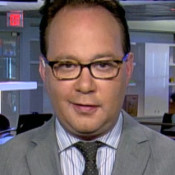Jerusalem’s new status goes to the heart of Israel’s conflict with the Palestinians – who are backed by Arab and other countries. But how did the two sides get here?
For more than 3,000 years Jerusalem has been fought over. As one of the most important sites for the Jewish, Islamic, and Christian faiths – Jerusalem has changed hands more than 40 times.
CGTN’s Nathan King reports.
The modern-day divisions over Jerusalem date back to 1948. After a U.N. plan to make the city an international one was overtaken by war- Israel declared independence and occupied West Jerusalem.
Jordanian forces occupied the Old city in the East. War came again in 1967. Jordan was pushed out, Israel united the city. The international community did not and has not in the years since recognized Jerusalem as the capital of Israel and East Jerusalem is considered occupied territory.
Both Israel and the Palestinians have for decades agreed that Jerusalem’s final status is to be determined in a final peace deal between Israel and Palestine.
But in the city itself the war has never really ended. Tensions simmer over access to religious sites.
The best example: the Al-Aqsa mosque, the third most holy site in Islam. But it is built on the Temple Mount, a site of ancient Jewish temples stretching back thousands of years. Clashes at the site between Muslim and Jewish worshippers are common.
In Jerusalem it is a war over centimeters.
Israeli development in the traditionally Arab part of the city is resisted by Palestinians and condemned by the international community. And today Israeli and Palestinian residents may live just meters from each other but have very different views of the U.S. President’s decision.
“I think it is about time – 3,000 years later than it should have been. Or 70 years after everyone admitted that it’s our capital city. Also the Arabs, they all know it is our capital city, so it is no new news,” Israeli Emmanuel Posen.
“We are not satisfied with the situation, how can he bring the embassy from Tel Aviv to here? The capital of Israel is in Tel Aviv, you want another capital here? It can’t work out. Two states: Palestine and Israel. Jerusalem is the capital of Palestine, it is known,” said Palestinian Mohammed Nabarak.
The U.S. decision to recognize Jerusalem as the Israeli capital before it does so for the Palestinians is a break from recent U.S. policy and may contradict UNSC resolutions on the status of occupied territory.
The decision to recognize the city as the capital of a Jewish state is bound to have repercussions that will ripple across Jerusalem, the region and the world.
 CGTN America
CGTN America
 An Ultra-Orthodox Jewish man prays in front of the Western Wall, the holiest site where Jews can pray, in Jerusalem’s Old City, Wednesday, Dec. 6, 2017. U.S. officials say President Donald Trump will recognize Jerusalem as Israel’s capital Wednesday, Dec. 6, and instruct the State Department to begin the multi-year process of moving the American embassy from Tel Aviv to the holy city. His decision could have deep repercussions across the region. (AP Photo/Oded Balilty)
An Ultra-Orthodox Jewish man prays in front of the Western Wall, the holiest site where Jews can pray, in Jerusalem’s Old City, Wednesday, Dec. 6, 2017. U.S. officials say President Donald Trump will recognize Jerusalem as Israel’s capital Wednesday, Dec. 6, and instruct the State Department to begin the multi-year process of moving the American embassy from Tel Aviv to the holy city. His decision could have deep repercussions across the region. (AP Photo/Oded Balilty)
